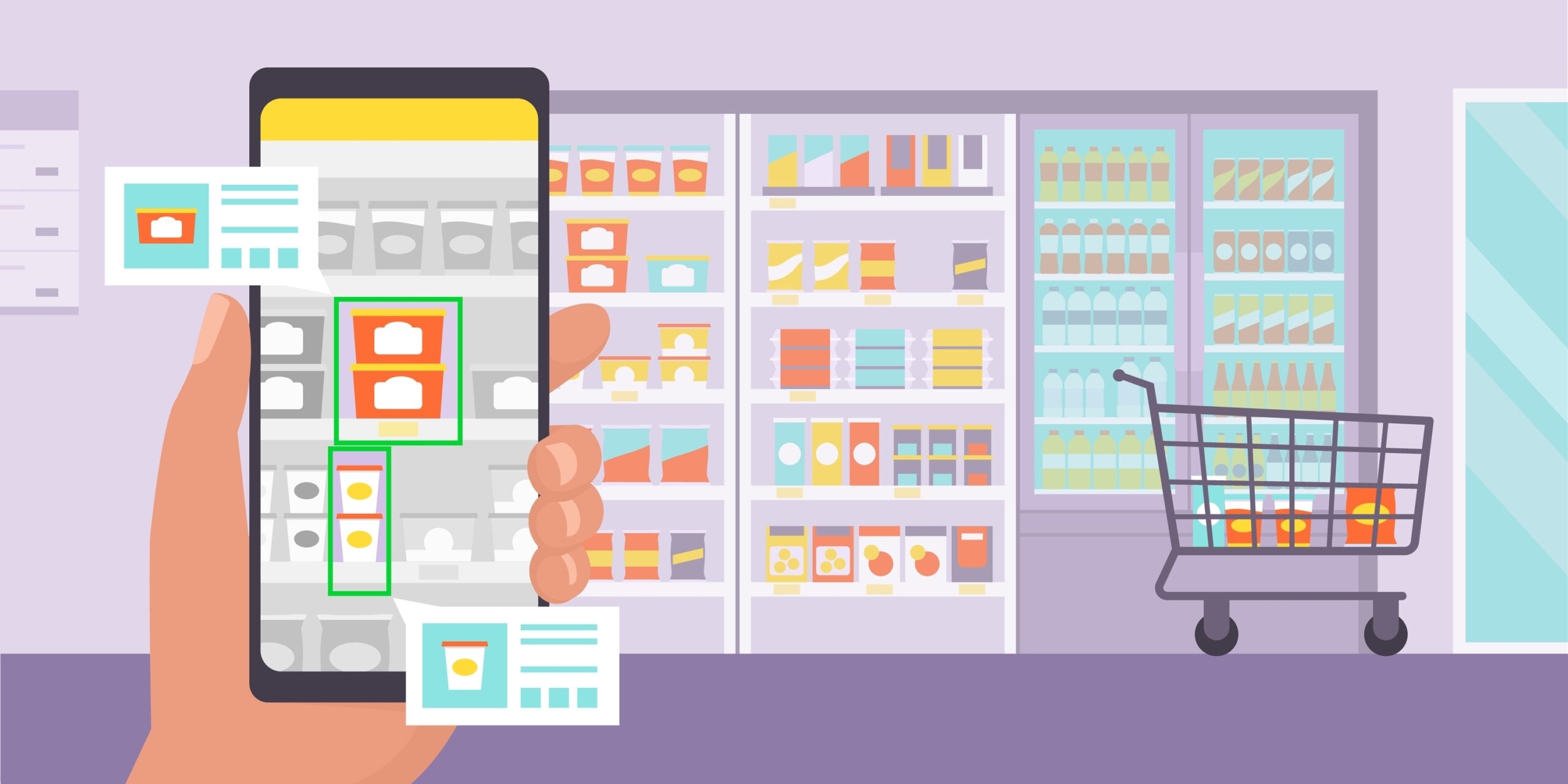Augmented reality (AR) has come a long way, especially in the retail industry. Technology which was once a far-off, intangible concept, is now more mainstream. Augmented reality is a technology that overlays digital information onto physical spaces in real time. Using virtual objects and holograms, AR can provide an immersive experience that can help with training and education.
In the retail landscape, augmented reality training solutions are quickly gaining popularity as a lightning-fast way to train employees. By harnessing the power of virtual reality (VR) and augmented reality, retailers can not only improve their employee eLearning processes but also improve the shopping experience for customers.
In fact, companies who hesitate to adopt AR technology in their processes may be left in the dust. If you’re new to the world of VR headsets, AR, and immersive learning, it’s easy to get overwhelmed by the technology. Read on to learn about the recent developments in augmented reality training solutions for retail. We’ll explore how they can help improve the training process.
How AR training can improve employee performance and customer satisfaction
The retail industry is highly competitive, and the success of any store depends on its employees, so it’s important to train them properly. This way, you know they can handle customer inquiries efficiently and provide excellent service. Employees must also be adept at using modern tech tools for store maintenance to drive sales.
Hands-on, immersive training experiences
Humans learn best by doing. During the learning experience, few methods are true substitutes for hands-on training. Part of augmented reality training‘s functionality is using 3D images and holographic displays. These allow them to get an immersive view of the product or procedure they are learning. Providing an overlay of real-world situations makes it easier for new staff to understand and apply concepts.
Visual learners are among those that can benefit from AR experiences. They can build mental models of how a product works or interacts with other components. Lowe’s Home Improvement is one example of companies embracing this technology. They offer AR training for their employees using Google Glass.
As a groundbreaking technology in the field of AR, Google Glass enables users to interact with information in a hands-free and intuitive way. But not every company can afford to provide a pair of Google Glass to each employee. Fear not; AR is also accessible via cheaper head-mounted displays or even hand-held devices like smartphones.
Ability to practice and make mistakes in a safe environment
The learning experience is often made more effective when individuals learn from their mistakes. Unfortunately, not all industries can provide a safe environment for learners still getting the hang of things. For example, airplane pilots log hundreds of hours in a flight simulator before flying an actual plane.
With AR training, it’s now possible to recreate such situations in retail without putting the trainees(or your products) at risk. Trainees can practice handling customer inquiries or merchandise displays without interacting with customers. An instructional design can be modified to suit a particular situation. It allows learners to observe and interact with the content in a safe environment.
Additionally, AR training can be used to provide an assessment of the trainee’s performance. They can then fine-tune the instructional design to focus on problematic topics. That brings us to our next point:
Customization for specific job roles and tasks
Corporate training is a broad field, and there is no one-size-fits-all solution. It’s essential to design training software that addresses the specific needs of a particular job role or task. AR technology facilitates customization by allowing trainers to develop tailored onboarding experiences.
Retailers can use AR training solutions to create an engaging experience for their new employees. Depending on the specific responsibilities, retailers can offer a variety of virtual scenarios. Workers at every level of the organization can benefit from this kind of customized training.
The elements within the AR experience can be adjusted as well. Whether you’re a grocery store or an auto parts store, you can customize the holograms and 3D renderings to match the merchandise. You’ll give your trainees an accurate representation of what they will be dealing with in real life.
Walmart has already begun to use AR training for its inventory management processes. VizPick is a software solution implemented in 2021. It helps Walmart associates quickly identify and move items with the help of augmented reality technology.
Increased engagement and motivation for employees
Finally, companies like Sephora switched to AR training because it is a more engaging experience for their employees. AR-based learning modules can adapt based on each trainee’s performance, increasing effectiveness. The gamification of training and use of smartphones is much more attractive to young people than traditional books or videos.
Gamification is a great way to keep employees engaged in the training process and allows them to review topics at their own pace. It also encourages collaboration, as learners can share feedback on the AR modules with each other. It adds an element of competition to the experience, as learners strive to achieve the highest scores in each module.
The result is increased retention of potential employees, which can be measured in real-time. Most AR solutions also come with detailed analytics and reporting capabilities. These can give you valuable insights into how well the trainees are performing.
AR for retail enablement
AR technology in the retail space isn’t just for new employees. It can also enable existing retail staff to quickly hone their skills and work more efficiently. At InContext, for example, we offer a retail execution tool called SMX GO. This mobile app for field enablement leverages AR, 3D modeling, and gamification to bring virtual training scenarios directly to store associates.
A common use case for this technology pertains to displays, signage, fixtures, and planograms. Store associates can use their smartphones or headsets to view 3D models, text, images, and videos. A digital twin of a physical location helps them understand how to best arrange merchandise and signage on-site and in real-time.
Results and feedback from employees and customers
Augmented and virtual reality training drastically reduces the learning curve during employee training. The immersive technology is intuitive, so it takes very little time for store associates to figure out how it works. The digital elements offer a visual representation that increases the speed and retention of information.
Instead of wasting countless hours on tedious training, retailers can quickly equip their employees with the skills they need to perform their job. This allows them to focus on implementing these lessons and driving sales.
Where can it go from here?
Augmented reality learning solutions are undoubtedly effective, but yet still in their infancy. This technology is constantly being improved to create easily tailored training experiences. However, they are also limited to being used in retail environments.
Virtual reality solutions may be more appropriate for companies that need to train employees off-premise, such as in an office setting or even at home. With a VR headset, employees can train in a simulated environment that closely mimics their work environment. They can then train in various scenarios and receive feedback, just like they would in a physical location.
Conclusion
We’ve only scratched the surface of what’s possible with augmented and virtual reality training solutions for retail. Companies are replacing traditional training methods with cutting-edge technologies. These technologies optimize the process, from healthcare providers to grocery stores.
The technology is still evolving, but companies like Walmart, Sephora, and InContext are already shining a spotlight on the benefits of these immersive learning experiences.
Undergoing a digital transformation is no small task, but the potential rewards are immense. If you need help implementing AR or VR technology in your business, get in touch with the experts at InContext Solutions today. We’ll walk you through every step of the process, showcasing just how powerful this technology can be.





